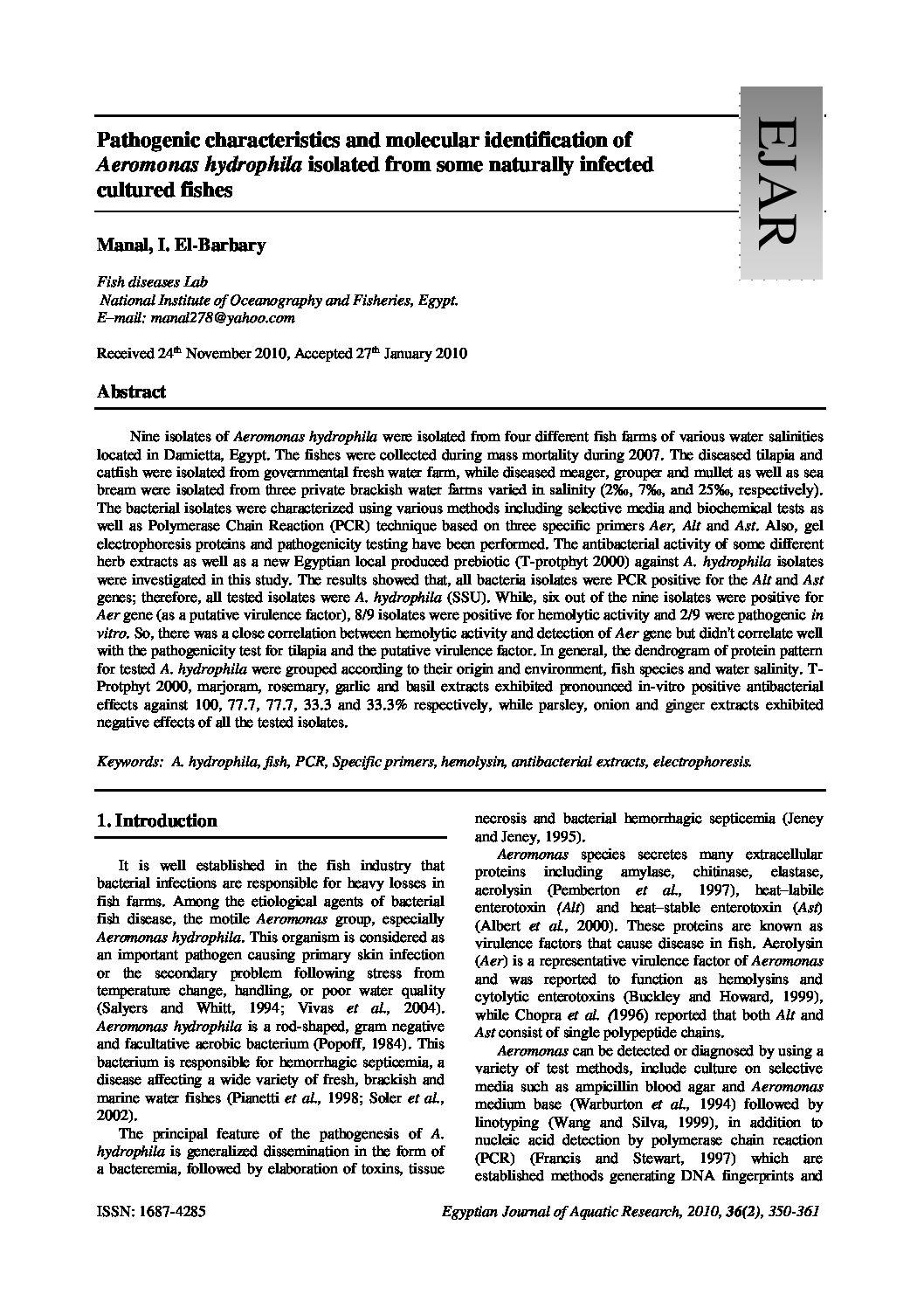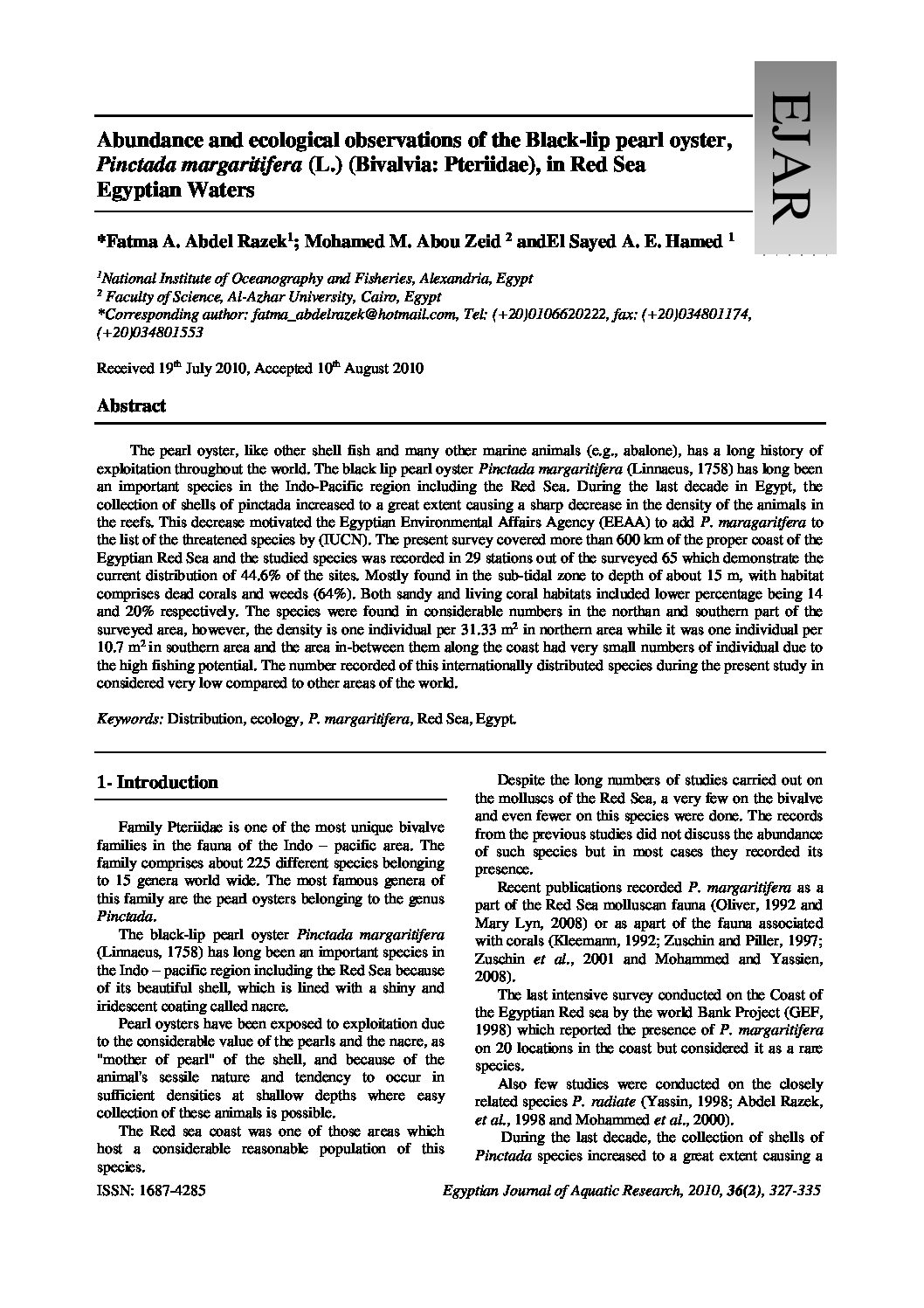Categories
vol-36Pathogenic characteristics and molecular identification of
Aeromonas hydrophila isolated from some naturally infected
cultured fishes
Manal, I. El-Barbary
Fish diseases Lab
National Institute of Oceanography and Fisheries, Egypt.
E–mail: [email protected]
Received 24th November 2010, Accepted 27th January 2010
Abstract
Nine isolates of Aeromonas hydrophila were isolated from four different fish farms of various water salinities
located in Damietta, Egypt. The fishes were collected during mass mortality during 2007. The diseased tilapia and
catfish were isolated from governmental fresh water farm, while diseased meager, grouper and mullet as well as sea
bream were isolated from three private brackish water farms varied in salinity (2‰, 7‰, and 25‰, respectively).
The bacterial isolates were characterized using various methods including selective media and biochemical tests as
well as Polymerase Chain Reaction (PCR) technique based on three specific primers Aer, Alt and Ast. Also, gel
electrophoresis proteins and pathogenicity testing have been performed. The antibacterial activity of some different
herb extracts as well as a new Egyptian local produced prebiotic (T-protphyt 2000) against A. hydrophila isolates
were investigated in this study. The results showed that, all bacteria isolates were PCR positive for the Alt and Ast
genes; therefore, all tested isolates were A. hydrophila (SSU). While, six out of the nine isolates were positive for
Aer gene (as a putative virulence factor), 8/9 isolates were positive for hemolytic activity and 2/9 were pathogenic in
vitro. So, there was a close correlation between hemolytic activity and detection of Aer gene but didn’t correlate well
with the pathogenicity test for tilapia and the putative virulence factor. In general, the dendrogram of protein pattern
for tested A. hydrophila were grouped according to their origin and environment, fish species and water salinity. TProtphyt 2000, marjoram, rosemary, garlic and basil extracts exhibited pronounced in-vitro positive antibacterial
effects against 100, 77.7, 77.7, 33.3 and 33.3% respectively, while parsley, onion and ginger extracts exhibited
negative effects of all the tested isolates.
Keywords: A. hydrophila, fish, PCR, Specific primers, hemolysin, antibacterial extracts, electrophoresis.







